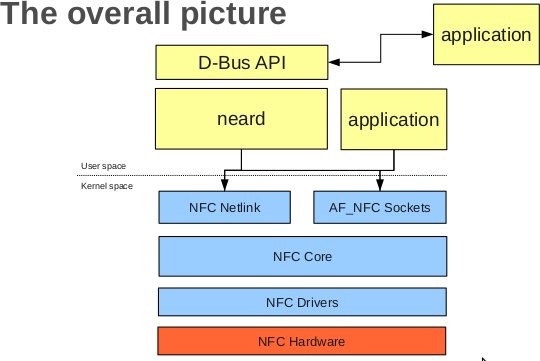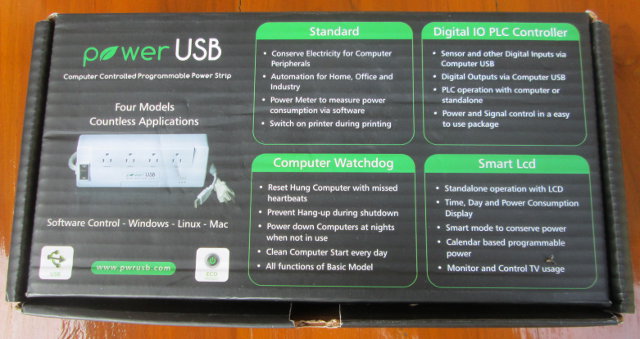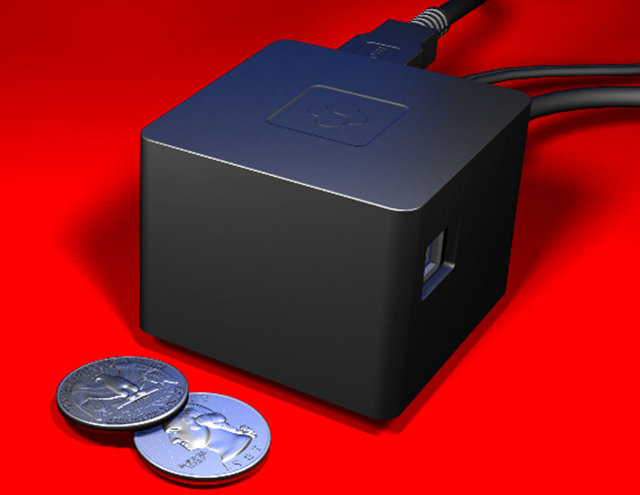Samuel Otiz, software engineer at the Intel Open Source Technology Center, talks about NFC support for Linux at the Embedded Linux Conference Europe in , on November 5, 2012. Abstract: Linux recently gained support for NFC (Neard Field Communication), and this presentation will describe the status of the current NFC stack in terms of actual features, hardware support and also distribution availability.After showing how this stack is architectured, we will also explain what our long and short term plans are. NFC hardware is typically found on mobile devices, many of them running Linux or Android. Up until recently, only Android provided a real and viable software support for those chipsets. During this presentation I will show how the Linux NFC stack is now getting on par with the Android stack features and API wise and how its design allows for an already broader range of supported chipsets. The presentation is divided into […]
Are We Headed for a Complexity Apocalypse in Embedded SoCs? – ELCE 2012
Free-electronics has made nearly 50 videos of Embedded Linux Conference Europe 2012 available at http://free-electrons.com/blog/elce-2012-videos/ in webM format. I’ll upload the ones I find most interesting to Youtube to make them accessible to a larger audience, and post them in this blog together with a short summary, and links to presentation slides when available. I did the same last year, so you can have a look at ELCE 2011 videos if you wish. Some 2012 videos are just an update from 2011. The first video is a keynote by Matt Locke, the Director of the Linux Developer Center at Texas Instruments, about the future of Embedded SoCs. First, he compares the block diagrams of a Power PC chip from 1995 and the latest TI OMAP 15 SoC. In the former, we can see the details of the architecture, but in the latter, we can only see an overview as it has […]
$14 Marstek MPR-N9 WiFi/3G Router with 2,400 mAh Battery
One of my readers (Onebir) brought Poray M3 mini Router to my attention a few days ago, as it just cost $17 at the time (now over $20) and OpenWRT developer Squonk seems very interested about it since it features microSD and SD card slots missing in TL-WR703N. However, the device only has 16 MB memory which makes it somewhat difficult to run OpenWRT, or at least some of its features. But today, I’m not going to talk about this. Mentions of Poray M3 router came in HAME MPR-A1 OpenWRT forum thread, and I discovered a new (to me) type of low cost, small form factor device: portable Wi-Fi/3G routers. Those devices are about the size of android mini-PC and contain the chips to handle Wi-Fi, USB host (for external 3G dongle), and comes with a built-in battery so that you can use them anywhere (beach, mountain, car…), as long […]
Lego Mindstorms EV3 Hackable Robots Run Linux
The LEGO Group has announced LEGO MINDSTORMS EV3, a new platform for consumer robotics designed for both younger generation and robotics enthusiasts, at CES 2013. MINDSTORMS system is powered by the new EV3 Intelligent Brick, that comes with more memory (64 MB + 16 MB internal flash memory) and a faster processor (ARM9 @ 300MHz), and runs a Linux-based firmware. EV3 Intelligent Brick also features an infrared port, a 178×128 LCD interface, a USB host port and SD expansion slot, and is now compatible with iOS and Android for remote control via Bluetooth 2.1. Thanks to 6 buttons present on the EV3, users can now program many functions directly, in addition to the ability to download programs from a desktop computer. Lego claims a simple robot can be built in 20 minutes without having to plug it into a PC. Beside EV3 intelligent brick, the set comes with 550 Lego Technic […]
Piglit OpenGL Driver Testing Framework Now Works with ARM Linux & OpenGL ES
Piglit is a collection of automated tests for OpenGL implementations that aims at improving the quality of open source OpenGL drivers by providing developers with a simple means to perform regression tests. ARM SoCs that come with a GPU usually (always?) supports OpenGL ES however. That’s why, Tom Gall (Linaro) has modified Piglit in order to bring this test suite to ARM Linux and OpenGL ES. There are about 6,900 OpenGL tests in Piglit, and currently 1,047 Piglit (OpenGL ES) tests can run on ARM . Tom also explains that piglit developers are now using waffle, a cross-platform C library that allows one to defer selection of GL API and window system until runtime. This will allow your to select the variation of the GL API (GL, GL ES) and windowing system (X11, Wayland…) you want to use at runtime. The code is still heavily modified, but it’s in the […]
PowerUSB Computer Controlled Power Strips Review
PowerUSB power strips are four outlets power strips designed to help users save power by better understanding their devices power consumption, and automatizing tasks such as power on/off using timers, printer on/off controls, and more. One outlet is always on (for the main computer) and the 3 remaining outlets can be controlled via USB and the control software installed in a Linux, Mac or Windows x86 machine. The three of the four outlets are controlled through the software. Those power strips should allow lower electricity bills, and cover the cost of the strips ($69 to $129) within a few months. There are 4 models: PowerUSB Basic – $69.99 – The simplest model. You can control the 3 programmable outlets with on/off timers and keyboard shortcuts. PowerUSB Digital IO – $109.99 – This version adds 5 digital input/output lines for instrumentation and automation. The current model has 3 inputs and 2 […]
ZEALZ GK802 / HI802 mini PC Can Now Run Ubuntu 11.10
After Freescale made available i.MX6 development resources, we all knew this was a matter of time before Ubuntu runs on Hi802 / Zealz GK802 mini PC based on Freescale i.MX6. The guys at GeekBuying have done it, and a beta version of Ubuntu 11.10 can run on the Zealz GK802. This is not the first time Ubuntu or another Linux distributions can run on one of these mini PCs, but it’s the very first time we should get full hardware graphics and hardware video decoding in Linux. You may have noticed the screen is cut on the sides, that’s because they haven’t done overscan adjustment before shooting the video. They are using Ubuntu 11.10 (Linaro) because that’s the version released by Freescale that supports GPU and video acceleration, and if they used Ubuntu 12.04, it would not work until Freescale releases the proper drivers. However, scrolling does not seem particularly […]
$159 CuBox Pro: Open Source Development Platform Based on Marvell ARMADA SoC
Back in 2011, SolidRun unveiled the CuBox, a miniature open source development platform based on Marvell Armada 510 SoC (88AP510) and aimed at applications such as multimedia, set-top-box, network attached storage (NAS), thin client, digital signage, automation… SolidRun has now announced an upgraded version called CuBox Pro based on the same platform but with 2 GB RAM, and a redesigned casing. Here are the specifications of this development platform: Marvell Armada 510 SoC – 800 MHz dual issue ARM PJ4 processor, VFPv3, wmmx SIMD and 512KB L2 cache. 2GByte DDR3 at 800MHz 1080p Video Decode Engine OpenGL ES 2.0 graphic engine HDMI 1080p Output (with CEC function) Gigabit Ethernet, SPDIF (optical audio), eSata 3Gbps, 2xUSB 2.0, micro-SD, micro-USB (console) Standard Infra-red receiver for 38KHz based IR controllers. No JTAG required. Unbrickable for Developers (i.e. you can’t brick the device to the point you have to physically remove the flash, burn it […]








